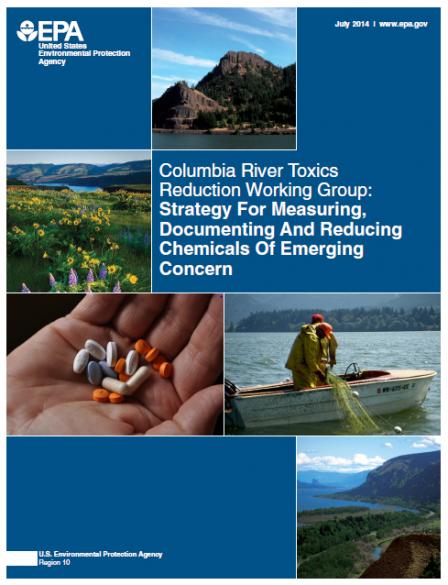Chemicals of Emerging Concern in the Columbia River

What are chemicals of emerging concern?
Chemicals of emerging concern (also called "contaminants of emerging concern" or "CECs") can include nanoparticles, pharmaceuticals, personal care products, estrogen-like compounds, flame retardants, detergents, and some industrial chemicals with potential significant impact on human health and aquatic life.
Some examples are:
- PAHs, PCBs, and PBDEs found throughout the lower Columbia River in water, sediment, and juvenile Chinook salmon. These contaminants are moving from river water and sediment into salmon prey and then into salmon tissue.
- 49 different chemicals of emerging concern were detected in sediments in the lower Columbia River main stem and several tributaries. Endocrine-disrupting compounds (contaminants that block or mimic hormones in the body and cause harm to fish and wildlife) were detected at 22 of 23 sites sampled.
- A myriad of pharmaceuticals and personal care products were detected in the effluent from wastewater treatment plants discharging to the Columbia River.
Learn more about CECs:
Research and Monitoring
The Columbia River Toxic Reduction Working Group's Toxics Reduction Action Plan identified the need for a Basin-wide research plan on contaminants of concern. Though some research on the effects of contaminants in the Basin ecosystem was being conducted by different agencies, there was no coordinated effort to identify the research priorities or gaps in our knowledge.
In 2014, the Working Group released its Strategy for Measuring, Documenting and Reducing Chemicals of Emerging Concern which provides an outline for a research and monitoring strategy, and a characterization of the biological impacts of CECs on aquatic and terrestrial wildlife.

